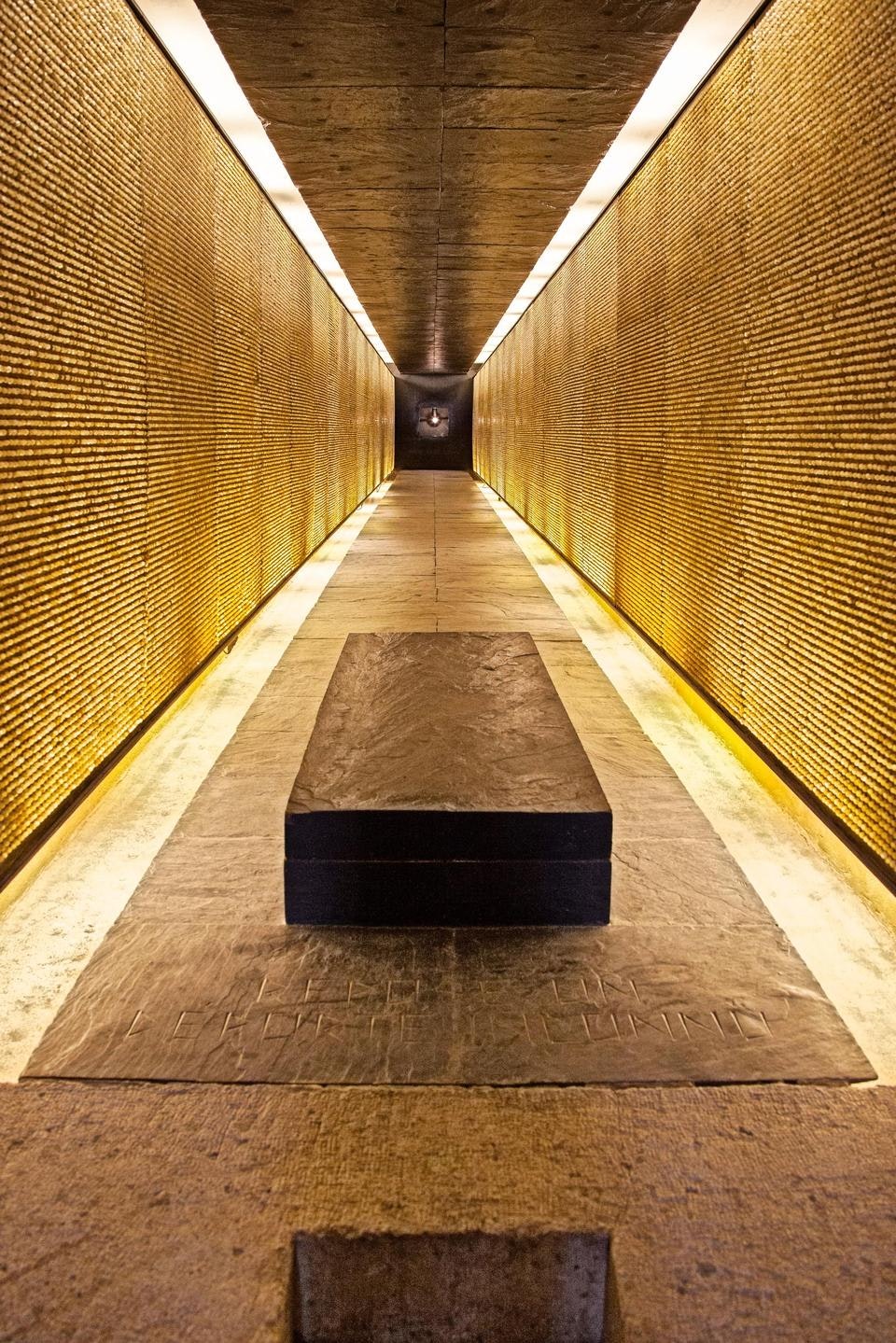This article is taken from the March 2025 issue of The Critic. To get the full magazine why not subscribe? Right now we’re offering five issues for just £10.
When Field Marshall His Royal Highness the Prince Consort, Duke of Saxony, Prince of Saxe-Coburg and Gotha, Knight of the Most Noble Order of the Garter died on 14 December, 1861, England was surprised into a great affection, warm feelings only partially realised when he was alive. This affection was eventually expressed as the Albert Memorial. Now one of London’s favourite landmarks, its early history was uneasy.
Eugène Viollet-le-Duc, the French rationalist architect, deplored the structural sham (fussy gingerbread over hidden and rapidly rusting box girders). The philosopher R.G. Collingwood on his morning walks through Kensington Gardens came to the settled opinion that it was “visibly misshapen, corrupt, crawling, verminous”. To Charles Handley-Read, pioneer scholar of Victorian architecture, it was a “test for taste”. Only with the publication of Kenneth Clark’s The Gothic Revival in 1927 did the Albert Memorial begin its long creep into national favour.
Memorials are problems. And our history of them is mixed at best.

The 1951 Festival of Britain, a memorial of sorts, was a success, but had its faults. Chief symbol of the nation’s thrust towards the future was Skylon, an eye-catching tensegrity structure with, like the nation, no apparent means of support. Winston Churchill, somewhat spitefully, as he construed the future to be socialist, had it dismantled and the componentry ended up with a scrap metal dealer on the River Lea, who turned it into paper-knives and other knick-knacks. In this some will see several poetic truths.
Still, the Festival itself was a success because it had purpose and clarity, provided by Gerald Barry and his creative director, Hugh Casson. The same cannot be said for the 2022 Festival of Brexit which, worshipping the false gods of diversity and inclusion and lacking any robust intellectual or artistic purpose, became an embarrassing £120m calamity. The Millennium Dome was another calamity, and that cost £750m.
Unless we are very careful the same might in future be said of the Queen Elizabeth Memorial, now the subject of ruminations deep inside government, feeding off some outreach into provincial focus groups. These latter are poison to the creative spirit so necessary in such an adventure.
The Government has provided £46m, a mysterious sum as no one has yet decided what the memorial should actually be. That sum buys a lot of valueless community engagement, but is not a big budget for ambitious building.
Meanwhile, the site has been determined as St James’s Park, on the line between Marlborough House and Birdcage Walk, crossing the popular but architecturally undistinguished Blue Bridge. This presents problems since St James’s Park is Grade 1-listed and its views are protected: it’s not legally possible to build anything that interrupts them.
In an amusing reflection and echo of Albert, the Queen Elizabeth Memorial Committee is now mulling its options. In Albert’s case, first thoughts included an Albert Fountain. Then an Albert University. Someone said the vaults of the British Museum should be raided for inspiration of what to build: the Mausoleum of Halicarnassus perhaps?
In the days before Freud’s insights into symbolism, Queen Victoria herself said only a monolith 500 feet tall could convey to the public the stature Albert enjoyed in her memory. Equerries trawled the quarries of Europe, but failed to find a source for such a huge piece of stone.
In the end, a competition was won by George Gilbert Scott, the busiest architect of his day. His design of an open shrine, vaguely inspired by traditional Eleanor crosses, has succeeded in becoming, if nothing else, a testament to the nowadays unimaginable confidence of Victoria’s imperium.
But what to do for Queen Elizabeth? There is talk of figurative sculpture. But that is a genre dead in all but North Korea and a few African countries. Frankly, sculpture of any sort is a moribund art form. A realistic statue of a windswept Queen in Barbour and headscarf with attendant corgis would be gruesomely inept, at least to people concerned with our standing as a nation justly proud of its creative credentials.
But the late Queen is a worthy subject to memorialise. Her reign was distinguished by exemplary dignity, duty, probity and, let’s be honest, a unique personal style. Wicked humour, too. Nicky Haslam said he once asked Her Majesty what she thought about taste, and the reply came: “I don’t think it helps.”
Certainly, she deserves better than the Queen Victoria Memorial, an end-game imperial horror by Sir Aston Webb with sculpture by Sir Thomas Brock completed only in 1924 as the visual terminus of The Mall. This great processional way was compromised from the start by bureaucrats. Officials presented Edward VII with the best and worst designs for Admiralty Arch, at the opposite end of The Mall, confident he would choose the better one. He did not.
What might a solution be? Great memorials, in fact, all great works of art, should be “surprising, but inevitable”. That applies to, say, Nelson’s Column and Lutyens’s Cenotaph which are consummate. Although an eloquent gesture towards Queen Elizabeth’s memory would be to scrap some of London’s atrocious public art. Outstanding here are the 1993 Queen Mother’s Gates by David Wynne and Giuseppe Lund, and 2004’s wince-making Animals in War monument on nearby Park Lane. The River Lea beckons.
An imaginative solution might be a semi-subterranean gallery transecting the park, but rising at the mid-point to a spectacular replacement for the tired old Blue Bridge. Such a thing might accommodate, say, a greenhouse of Commonwealth plants. Or a gallery of Elizabethan portraits, Her late Majesty being the most portrayed person in the history of the world: stamps, banknotes, coins, Warhol, Annigoni, Karsh of Ottawa and Lucian Freud.

The content would be mesmerising and, architecturally, such a thing would exploit that enjoyable and exciting inside-outside experience found in Pei’s Louvre Pyramid and Pingusson’s Mémorial des martyrs de la déportation on Paris’s Île de la Cité. Done well, it might achieve the effect of Florence’s Corridoio Vasariano, a semi-secret passage within the Ponte Vecchio, once full of portraits: intimacy and voyeurism have their parts to play in architectural effects.
Done well, it might eventually rival memories of Decimus Burton at Kew or even Joseph Paxton’s magnificent prefabricated “Crystal Palace” built for the Great Exhibition of 1851.
The Albert Memorial was built on the site, and Paxton’s iron and glass pavilion moved to the South London district which now bears its name. Here, it burned down in 1936. The memorial business is a precarious one.
If something is built in memory of Queen Elizabeth, there must be a commitment to it being superlative. There must be a very clear direction because of all the known knowns in architecture and design, one is paramount: the result is only ever as good as the brief.
All compulsory pieties about diversity and inclusivity should be binned, or we will have a festival of ethnic minority folk-dancing. Fashionable calls for virtual memorials which will be technologically redundant before they break down can also be ignored. There should be no need for effortful and fretful attempts at “engagement”. Commit to something uncompromisingly wonderful, and engagement will follow.
“Wonder” would also be a helpful corrective to the pervasive doubts we all feel about national pride, ambition and competence. I hope there are people around who can still grasp the idea of “surprising, but inevitable”. That, I think, would be the very best brief.







